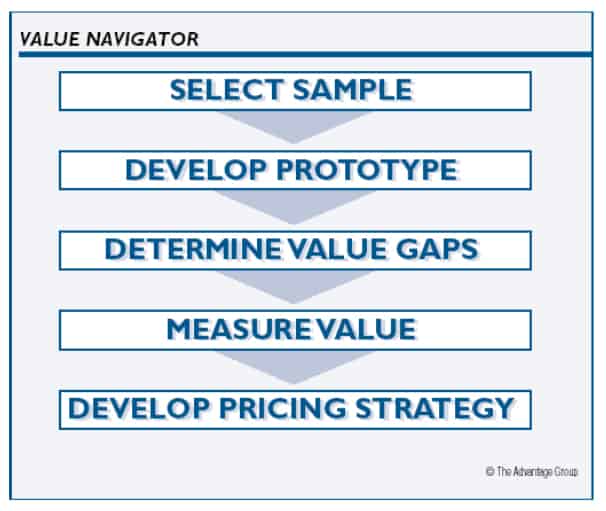Pricing Innovation
Putting the Right Price on Innovative New Products
Pricing a new product is one of the most challenging marketing decisions to be made. If the price is too high, it can scare customers away; if it’s too low, you can leave substantial amounts of money on the table and raise doubts about the quality of your offering.
It’s even more difficult when you are launching an innovative product that customers are not familiar with, as opposed to a new product in an existing category, since the benchmarks for determining value are not evident. Not only do customers not know the benefit of the innovation, but also no buying process has been established to provide insight into the purchasing decision.
Pricing a new product is one of the most challenging marketing decisions to be made. If the price is too high, it can scare customers away; if it’s too low, you can leave substantial amounts of money on the table and raise doubts about the quality of your offering.
It’s even more difficult when you are launching an innovative product that customers are not familiar with, as opposed to a new product in an existing category, since the benchmarks for determining value are not evident.
Not only do customers not know the benefit of the innovation, but also no buying process has been established to provide insight into the purchasing decision.
For example, think back to when you first learned about the Internet. Putting a value on the benefits of using the Internet at that time would have been difficult – if not impossible – simply because you did not yet know what it could do for you. To assist clients with this perplexing problem we have developed “Value Navigator”, a five-step process for estimating value and pricing innovations.
The five-step process for estimating value and pricing innovations

Select Sample – not at random
Deciding whom to include in your sample is an important fi rst step. Unlike products launched into existing categories, innovations will succeed or fail based on the views of the fi rst 3-5% of purchasers who try the product. These people tend to be leading-edge thinkers, or innovators who need/want the benefits most. Therefore, it is much more important that you understand their views on the value of the product and their price sensitivity, since they are going to infl uence the opinions of the rest of the market.
This is referred to as the “Diffusion Effect,” and has been empirically proven in numerous studies of innovations.
Develop prototype and educate
You must provide the customer with in-depth product knowledge to ensure that he or she can realistically assess the benefi ts. We recently completed a study on behalf of a healthcare client whose innovation was very diffi cult to understand. The first few interviews we conducted led to frustration because, even with the prototype, the clients were having diffi culty understanding the product. It was only after we went back to the drawing board and made further refi nements that the interviewing process went more smoothly and we were able to get realistic and informed opinions.
Determine value gaps
Ask customers to rate the value of the attributes of your innovation. Once you have completed that exercise, ask them to rate their level of satisfaction with the products/ services they currently use. This is often an interesting and enlightening exercise. Innovations often replace several different products at one time. Understanding what those products are, their costs, and how customers use them is extremely important; it will help you establish the “reference points” the customer uses for assessing the value of your innovation.
Measure value delivered
This is the trickiest part of the process. When clients make a buying decision, they purchase three things: size, speed, certainty. Therefore, you must measure all three from the customer’s perspective to ensure that you price your product properly. Of the three, certainty is the most important. In our next newsletter, we will focus on how to measure the value of an innovation.